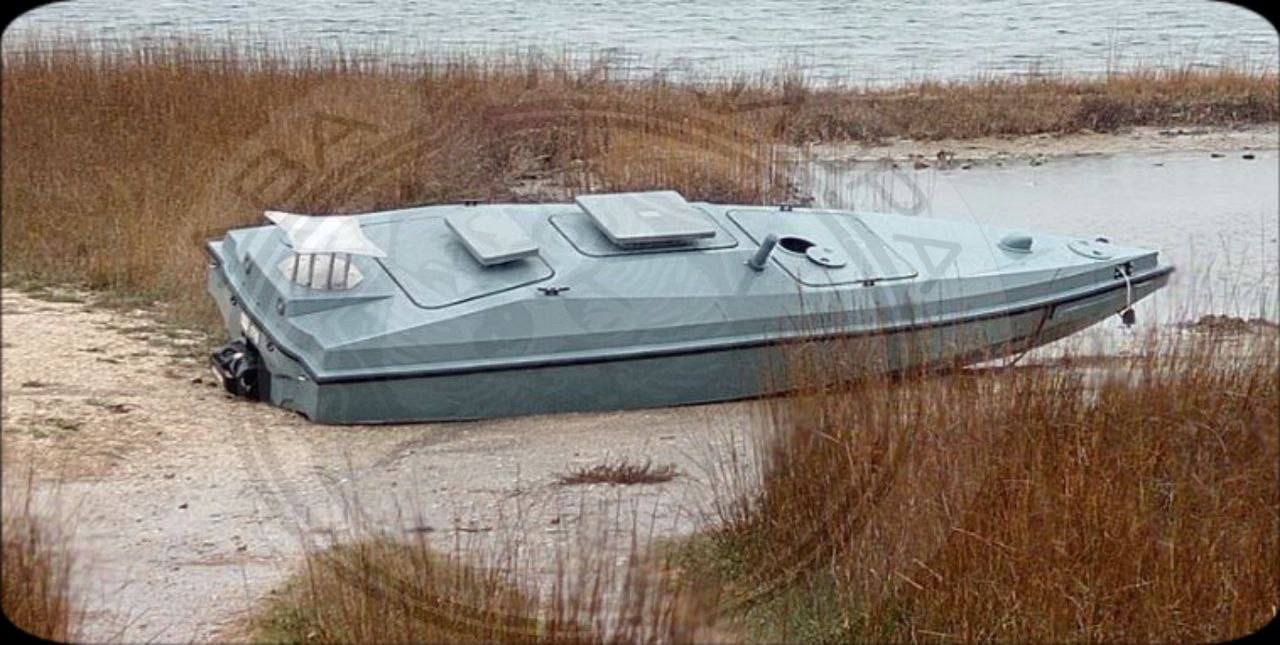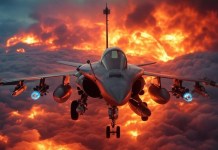A day after the boatless navy of Ukraine sunk another of the Russian Black Sea Fleet vessels using uncrewed surface vessels (USVs) or drone boats, video has emerged of the dramatic last moments of the crew aboard the Russian Black Sea Fleet landing ship Cesar Kunikov that was attacked using MAGURA V5 uncrewed surface vessels in February.
The US Navy is trying to replicate Ukraine’s success against a much larger Russian navy in the Indo-Pacific against the PLA-Navy, whose numerical supremacy is making it impossible for smaller countries like Taiwan and the Philippines to stand up to it.
The footage, which appears to have been shot by one of the crew members, underscores how perilous an attack by multiple drone boats can be. The video, probably shot by a handheld camera, shows the crew hitting the drone boats with guns. The crew used all the means to repel the naval kamikaze drone boats in the battle that lasted about 20 minutes.
Kremlin military correspondents have published a video of an alleged Ukrainian naval drone attack on the Big Landing Ship "Tsezar Kunikov" on February 14
In the video, armed men try to hit surface targets with firearms, then an explosion is heard and a fire starts.
The… https://t.co/K6YzP05R7m pic.twitter.com/vkRhozeCb5
— NEXTA (@nexta_tv) March 6, 2024
Out of the ten drones, four were reportedly destroyed. The fifth one managed to hit the ship in the stern, rendering it immobile. Thereafter, the remaining drones hit it alternately on the port side, midship area, and closer to the stern. The ninth one entered the ship through a hole and detonated inside the vessel. The capsizing took 40 minutes, and the crew escaped using rafts.
“An attack by at least 10 USVs, swarming in a very decentralized manner to generate combat mass, which eventually saturated the ship’s onboard defense layers – this will the playbook for uncrewed platforms in the years ahead, shaping the evolution of robotic layers as a doctrinal necessity in offensive and defensive vectors,” ex Indian Air Force pilot and CEO of a drone start up NewSpace Research and Technologies Sameer Joshi said on social media X.
“And further, when the man in the loop is replaced to a great extent by swarm autonomy algorithms, the OODA loop will close even faster, with even more dramatic effects in the TBA (Tactical Battle Area),” Joshi added, heralding the coming of the Swarm drones. The OODA loop (observe, orient, decide, act) is a decision-making model developed by the US Air Force’s military strategist, Colonel John Boyd.
The “MAGURA” drones are only a few meters long and powered by jet skis, the pilot said, but the 18-foot-long maritime drones boast a large range of around 800 kilometers (nearly 500 miles). The long sea legs of the drones give his unit freedom to launch their drones from greater distances against Crimean targets. The drones can be pre-programmed for their journey and are monitored by the pilot, who can wrest control of the final approach.
The low profile of the drones makes them difficult to spot on the water’s surface.
Commander Milind Kulshreshtha (retired) from the Indian Navy and also the developer of the force’s first indigenous Naval Combat Management Systems for modern warships told the EurAsian Times: “This looks like a camera-guided human attack. Here, it is a nighttime attack and difficult to detect as these (drone) boats have low RCS (radar cross section) …. The Russian ship is also slow-moving and not taking any evasive measures—a sitting duck, actually.”
He contends that these attacks are possible near coastal areas as remote guidance in open seas is complex technology. He said even though the drone boats are difficult to detect owing to the small RCS, such vessels rely on camera control and local guidance to hit a target making them vulnerable to EW jamming and can be well defended against.
“Yes, these evolved kamikaze boats are a grave threat with AI-based decision-making, but warships with sophisticated surveillance drones (with day/night vision) can help detect such near-underwater boats,” he opines.

World Navies Ops For For USVs
Up to 40 percent of the US naval fleet is projected to be unmanned by 2050.
The US Navy will be establishing a second unmanned surface vessel squadron in the next few months. The Pentagon has accelerated unmanned systems development to deal with increasing aggressions shown by China against Taiwan and smaller island countries in its backyard.
As reported by the EurAsian Times, the US Navy has reached out to the defense industry to work underwater autonomous swarming drones that can traverse hundreds of miles through contested water space, then loitering around at the designated place to look out for maritime threats and then taking out a hostile maritime vessel if required.
The US Navy has been experimenting in the Pacific with a lethal drone concept called “hellscape.” Under the concept, the US would seek to disrupt China’s amphibious invasion of Taiwan with a combination of loitering munitions and attack drones.

Naval observers have been predicting that the swarms of cheap drones underwater could pose the biggest threat to submarines. Swarming drones will be small, lightweight, and cheap. Networked together, they will cooperate like bees from the same hive.
These ocean-going vehicles will work to ensure freedom of navigation, not only for the United States but also for its allies and partners across the globe.
Loitering munitions, also known as kamikaze drones, differ from other weapons in being relatively slow but able to patrol an area for a prolonged period, looking for targets before identifying, selecting, and attacking them.
A swarm of dozens comprising hundreds or even thousands of small drones can overwhelm a target. While they might not be able to sink a warship, they could easily subdue the radar and defensive systems, leaving it open to be targeted by other weapons.
The autonomous vehicle will be required to have a range of 500-1000 nautical miles and to be able to transport a payload of 1000 lbs while running on diesel. The submerged drones would have the capability to loiter for several days and would be able to traverse at a speed of 35 knots or faster.
Unlike single drones, which require one operator each, a swarm of drones comprising several drones can be controlled by one operator.
- Ritu Sharma has been a journalist for over a decade, writing on defense, foreign affairs, and nuclear technology.
- The author can be reached at ritu.sharma (at) mail.com
- Follow EurAsian Times on Google News




